
Dementia Friendly Signage & Wayfinding
The hospital experience can be disorienting for any new visitor — but for someone with Alzheimer’s or dementia, this stress can be magnified tenfold. According to the Alzheimer’s Association, an increasingly large portion of the population falls into this category. More than 5 million Americans are living with Alzheimer’s; by 2050, this number is projected to rise to nearly 14 million.
While there’s not yet a cure for dementia, there are notable ways that healthcare architects, designers, and facility managers can create an environment that better supports the wellbeing and safety of patients and visitors with the disease. Below, we’ll explore the ways that dementia-friendly signage and wayfinding can help.
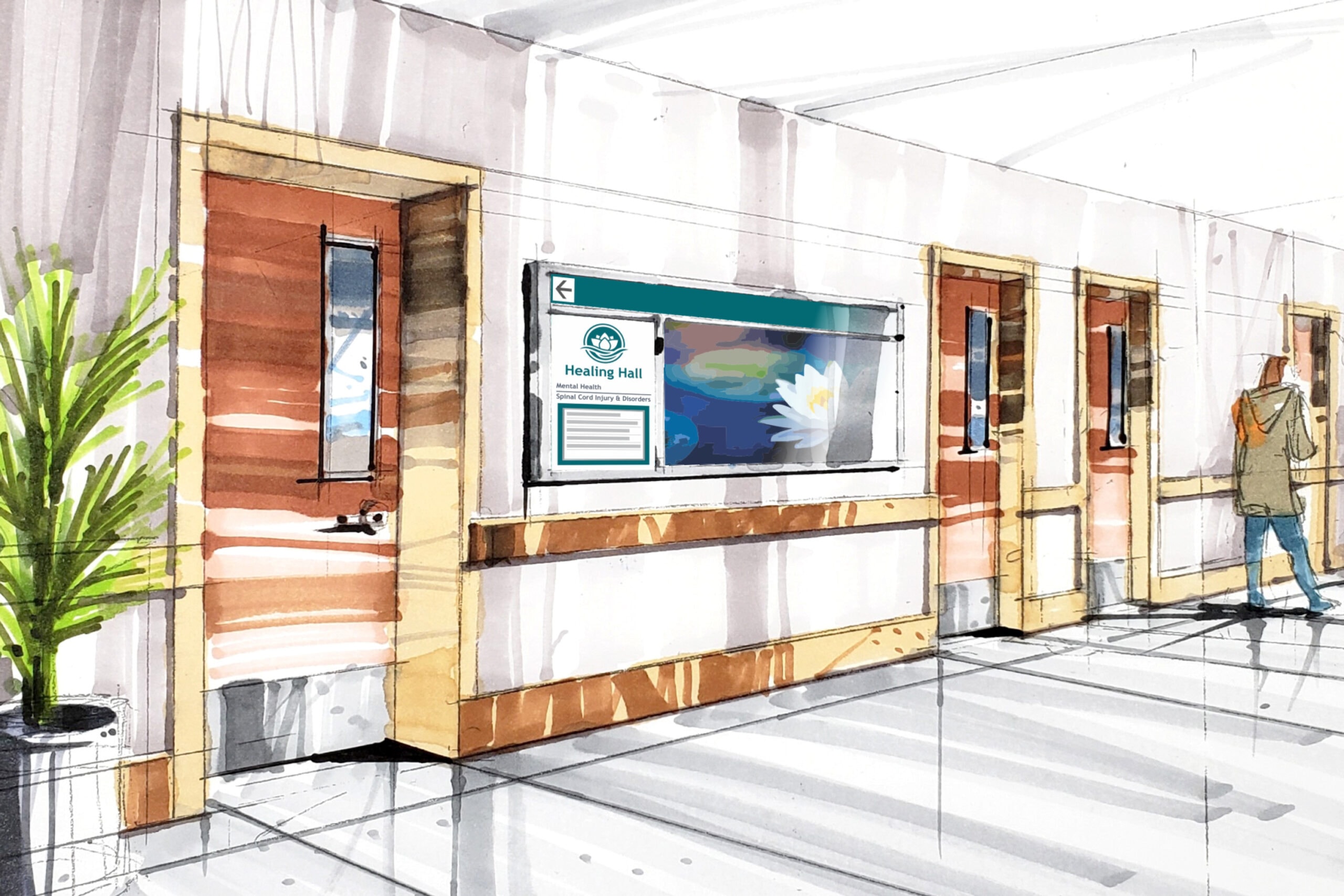
Dementia Patient Experience
- Judgment: Forgetting how to use household appliances.
- Sense of time and place: Getting lost on one's own street.
- Behavior: Becoming easily confused, suspicious, or fearful.
- Physical ability: Having trouble with balance.
- Senses: Experiencing changes in vision, hearing, sensitivity to temperature, or depth perception.
It’s no surprise that most healthcare facilities — which are large-scale, complex, and overstimulating by nature — often exacerbate symptoms for those dealing with cognitive impairment. Compounding these challenges is the fact that the majority of dementia sufferers are elderly, which raises the likelihood that they’re also dealing with mobility limitations and/or visual and hearing impairments.
Increased agitation and distress are common responses to the struggle of navigating the unfamiliar hospital terrain. The perceptual and visuospatial problems faced by those with dementia (such as difficulty with depth perception) heighten this sense of disorientation and increase the risk of injury.

Rising Need for Dementia-Friendly Hospitals
With the growing recognition that the built environment has a direct link to patient outcomes, hospitals are stepping up to create safer, more welcoming spaces for those with cognitive challenges. The William S. Middleton Memorial Veterans Hospital in Madison, Wisconsin — which was named the first Dementia Friendly VA hospital in the country in 2017 — is one such facility.
Of the six criteria required for a facility to be recognized as a Dementia Friendly hospital, the most notable to examine for our purposes is the “Environmental Improvements” category. Enhanced signage plays a vital role; at the Madison VA Hospital, clinics and elevators were all renamed. These simplified names were reinforced with illustrated signage (forests for ‘Forest Clinic,’ rivers for ‘River Clinic,’ etc.).
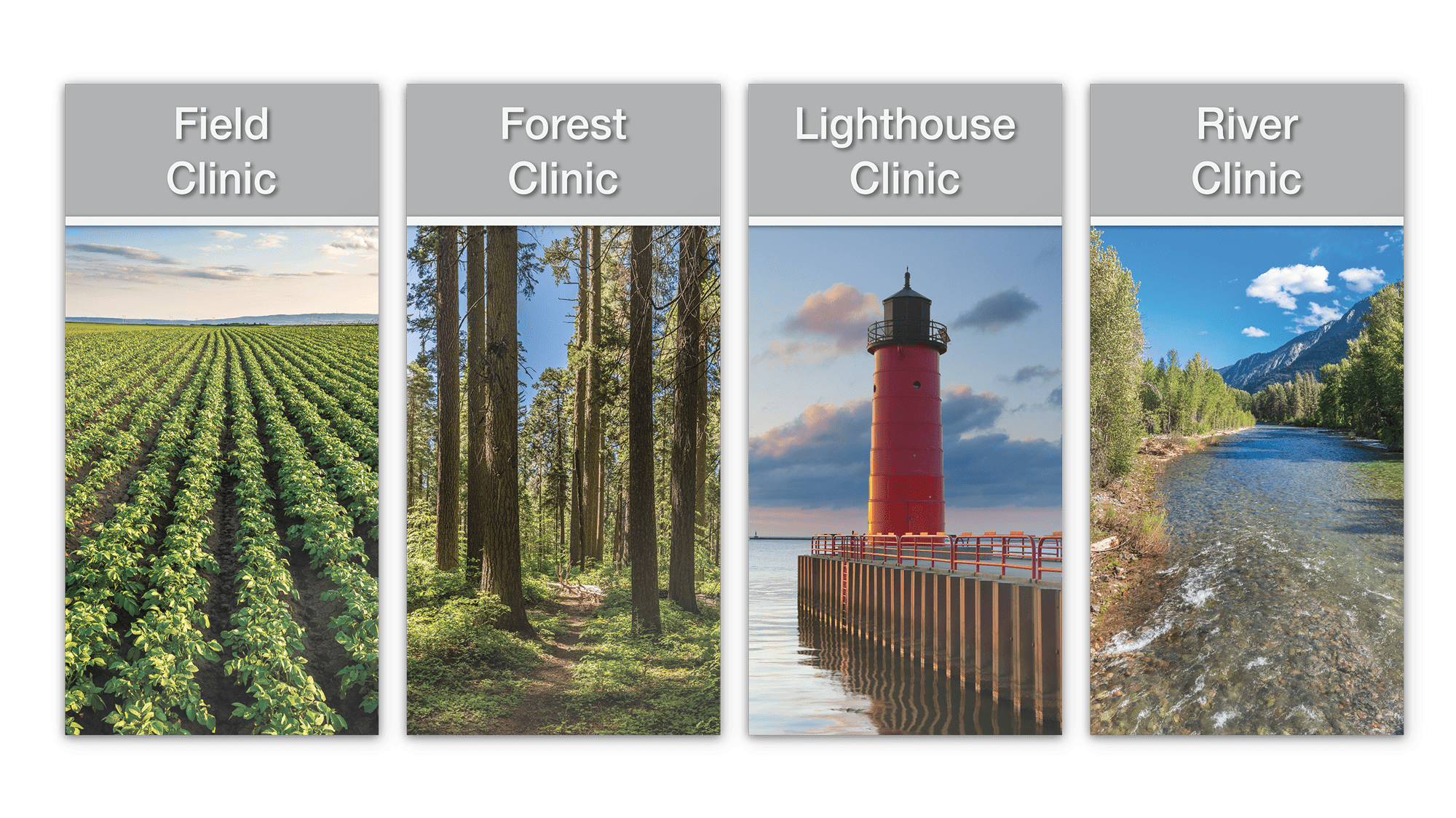
Improving Wayfinding in Care Environments
The path to successful signage and wayfinding projects relies on partnering with a firm that can facilitate a 'Design, Build, and Maintain' approach.
Support and Reinforce Orientation
For those with Alzheimer’s, spatial cognition difficulties throw a wrench in orientation and comprehension of their environment. Luckily, enhanced signage is an aesthetically pleasing way to combat this issue. Other orientation “lifelines” include large face clocks, calendars, access to outside spaces, seasonal artwork, and photographs of local nature scenes.
Embrace Universal Design Standards
When it comes to universal design, inclusivity is the name of the game. Its aim, according to the Dementia Friendly Hospitals from a Universal Design Approach (2018 Guidelines), is to design buildings that are accessible to as many people as possible, regardless of age, disability, or other factors. So while no two people with dementia will have the exact same experience, universal design standards help ensure that a greater number of the population has the ability to move about and operate freely (and safely!).
So, what does that mean as far as signage? First, there’s an incredible value in using clear, plain language that’s easily understood by all ages; the difference between “Eye Clinic” and “Ophthalmology” is night and day. Once terminology is agreed upon, its use should be consistent across all communications. Pictorial signs, which include illustrations or icons alongside the text, further improve comprehension, and for optimal visibility, it’s essential that all images contrast with the background color.
Increase Legibility
When it comes to legibility, the use of large and straightforward fonts are non-negotiable (Sans Serif typefaces fall into this category). This goal can also be accomplished with the help of uncluttered design, even lighting, and clear sightlines. Location, of course, is also key; signs shouldn’t be too far above eye level, but consideration must be given to areas where visitors could potentially block the signs. Avoiding glossy material finishes where text is displayed is just as important. Both the 2012 ADA guidelines and 2018 UD Guidelines recommend using non-glossy finishes, like matte or satin, to help avoid glare on signage.

Optimal Wayfinding Practices
Good wayfinding practices are critical for any facility — especially in healthcare environments that care for the vulnerable population of Alzheimer’s patients. According to the 2018 UD Guidelines, hospitals must provide optimal visual access and clearly communicate the overall structure of the space, which can be achieved by “articulating key features and functional zones, clearly expressing the circulation strategy, creating spaces with distinct character, introducing key landmarks, and at a more detailed level, using graphic information.”
Wayfinding can be aided by proper color contrast, especially between floors and walls. The use of bright, bold, and vivid colors has been shown to improve short-term memory and improve the cognitive ability of wayfinding; the colors red, orange, and yellow are all stimulating choices for this population.
Progressive Disclosure
Progressive disclosure is a wayfinding approach that’s particularly beneficial for large-scale healthcare facilities. The key is to provide just enough information to get the visitor to their next decision point; in essence, this minimizes decision-making and information overload, which can trigger distress.

Dementia-Friendly Artwork
Science shows that nature-based artwork is remarkably therapeutic and restorative for dementia patients. Flowers have specifically been shown to stimulate emotions in this population. Photography of regional and local nature and communities can also help orient patients with a sense of place.
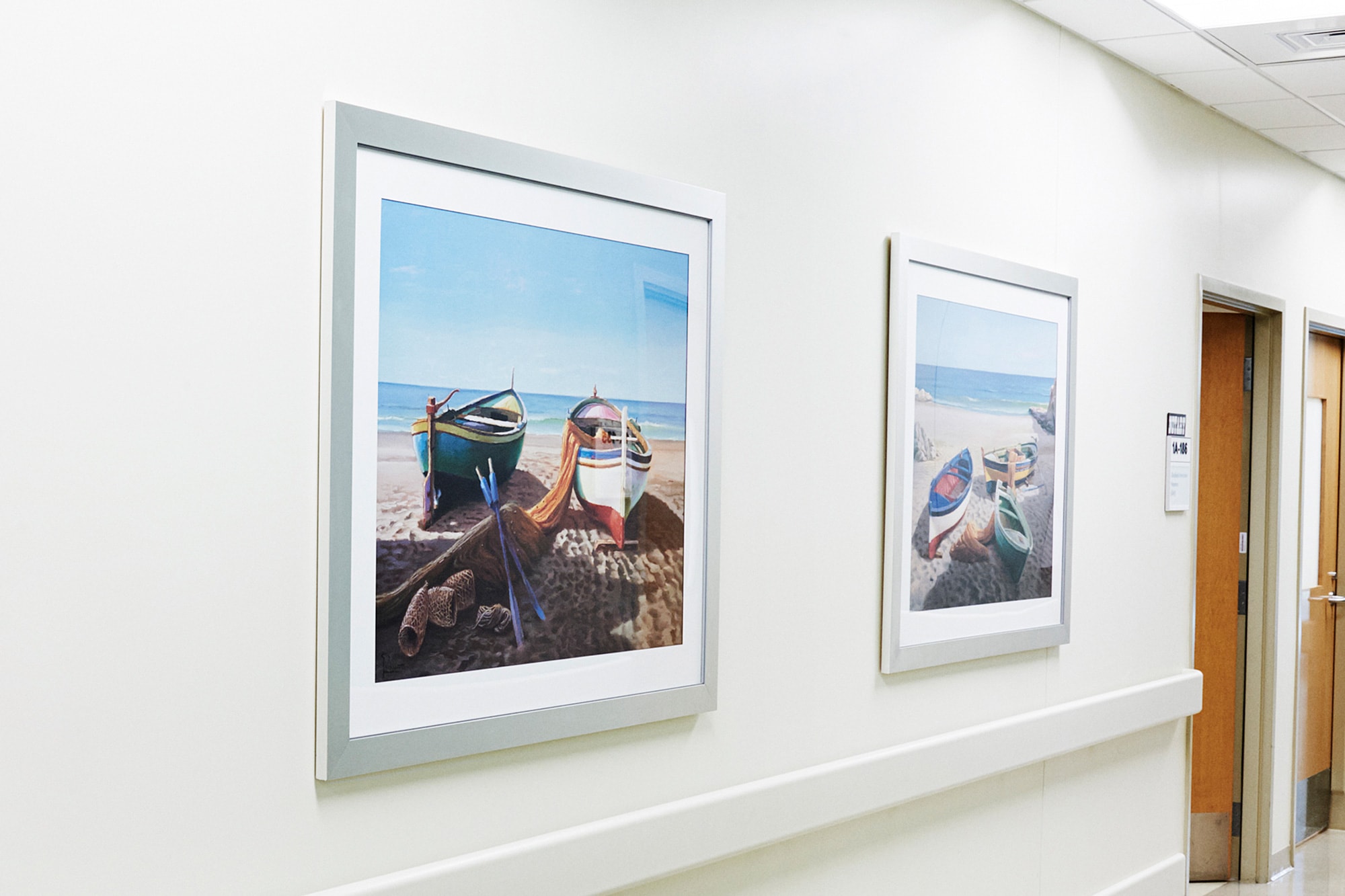
Why invest in dementia-friendly improvements?
According to the Center for Aging and Health at UNC, adults over 75 are the fastest growing segment of the population — and Alzheimer’s and related dementias affect one in three adults over 85. When you consider the challenges posed by patients with dementia to hospitals (prolonged stays, higher costs, increased readmissions), it’s evident that dementia friendly care environments are more critical than ever.
It’s also clear that patients with dementia aren’t the only benefactors of enhanced signage and wayfinding. A 2015 report from the Future Healthcare Journal discovered that making simple changes to the physical environment resulted in a significant spike in staff morale. By addressing the stressors that trigger behavioral issues — yelling, pulling at IVs, trying to escape the facility, etc. — a more productive environment for treatment is created. This in turn improves recruitment and retention, and better meets the needs of all patients, visitors, and caregivers.
In summary, embracing dementia friendly signage promotes safety, reduces agitation, encourages independence and greater ease of activity, softens the “institutional hospital” vibe, and makes for an all-around more accessible building...and that’s just the short list!
The best part of all? Improving signage and wayfinding provides immediate results without disturbing your facility.
Dementia-Friendly Wayfinding Game Plan
- 1
Orientation Indicators
Locate artwork and large-format graphics at decision points to help patients connect to their surroundings. Imagery that references the local community and nature are best. - 2
Icons & Illustrations
Pairing familiar icons alongside text whenever possible will help reinforce legibility and wayfinding for patients and visitors alike.
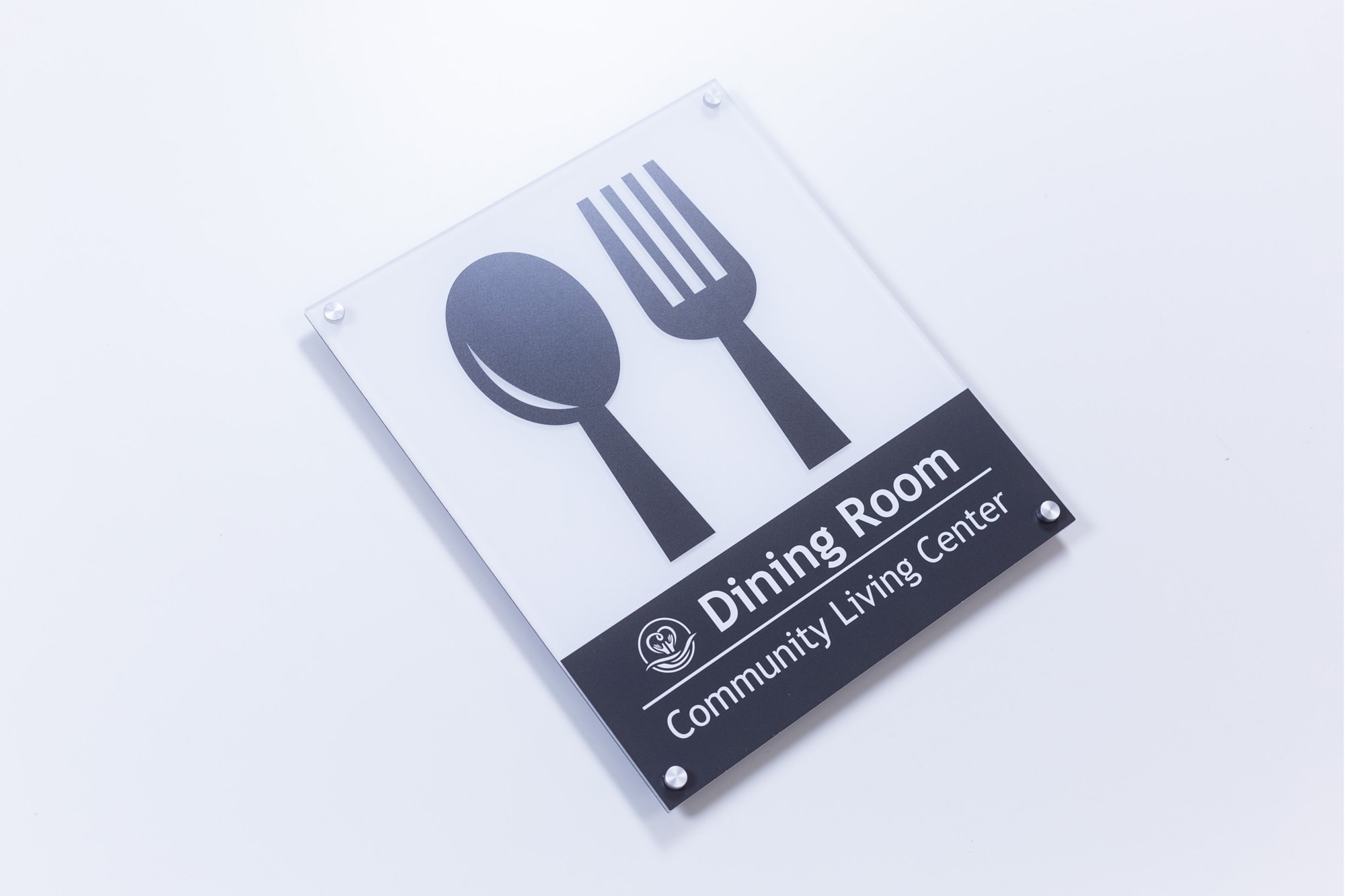
- 3
Large Letters & Numbers
Use large letters and numbers in prominent locations to help patients easily identify the current level and area. - 4
Clear, Plain Language
Opt for shorter clinic names in lieu of lengthy hard-to-remember ones. An example might be renaming “Ophthalmology” to “Eye Clinic”. - 5
Progressive Disclosure
Signage with long lists of destinations can be confusing for everyone, including those with dementia. Information should flow from general to specific. - 6
Neighborhoods & Zones
Create neighborhoods or zones with distinct names, colors, icons and imagery to further reinforce orientation within the facility.
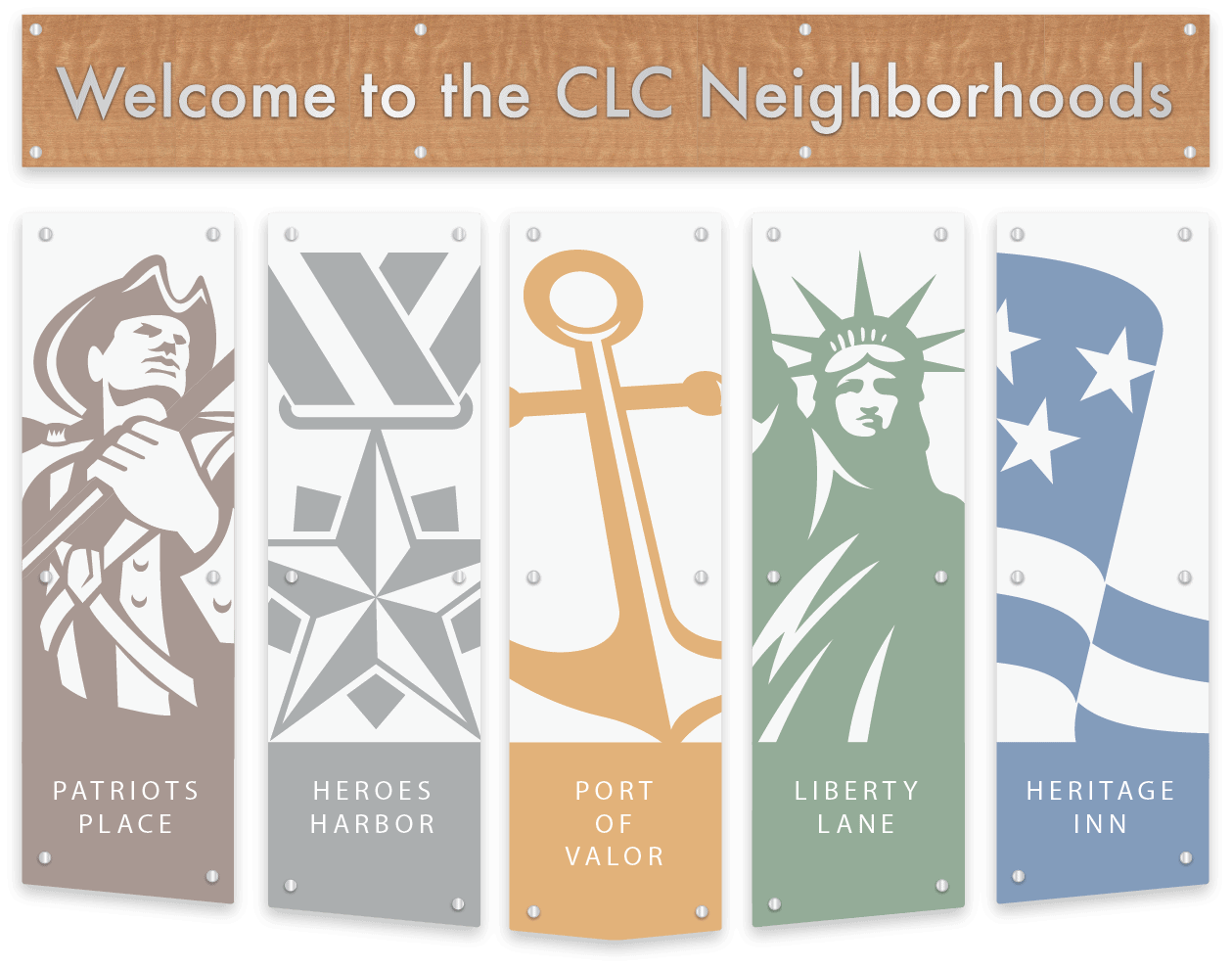
- 7
Crisp Sans Serif Text
Using simple, uncluttered designs and sans serif text with high-contrast to the background will increase legibility. 8
Bright & Bold Colors
Bright, bold and vivid colors help signage stand out amongst muted architectural finishes and white walls common in healthcare facilities.9
Patient Room Information
Updatable patient room information signs such as CareTabs make staff and visitors aware of a patient’s special requirements.
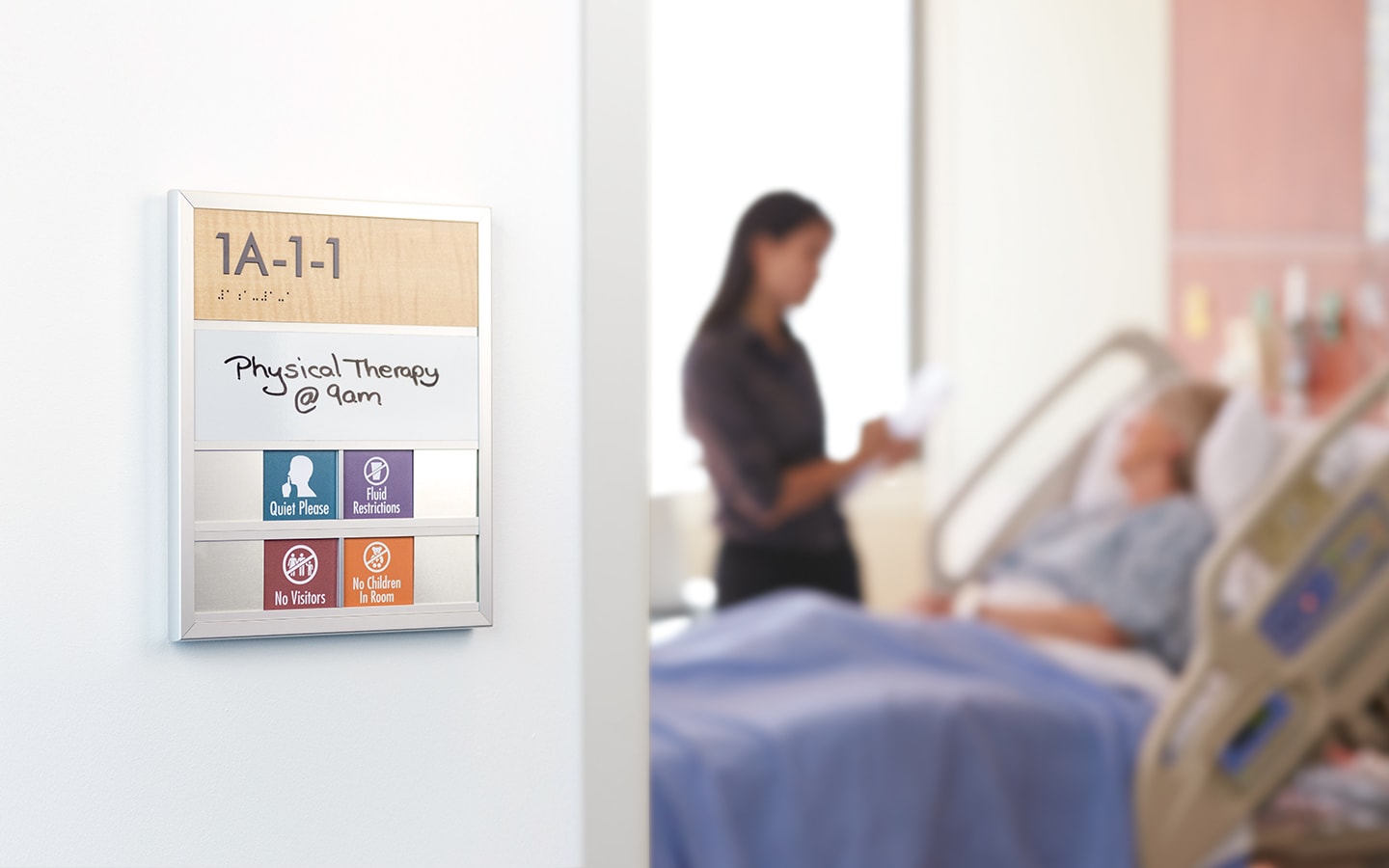
10
Consistency
Consistency across all signage, messaging and pre-visitation information is critical in preventing confusion for patients and visitors.11
A Wayfinding Partner
To ensure successful implementation and adherence, recruit advocates internally and externally by creating a wayfinding task force and hire a trusted signage partner.
